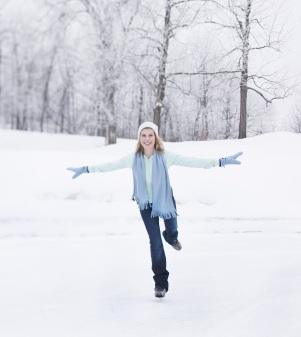Asthma and Winter Sports
 Whether you are preparing to compete in the Winter Olympics or enjoying winter sports on your own, exercise-induced bronchoconstriction (EIB) should not force you to be a spectator in your favorite sporting activities.
Whether you are preparing to compete in the Winter Olympics or enjoying winter sports on your own, exercise-induced bronchoconstriction (EIB) should not force you to be a spectator in your favorite sporting activities.
EIB happens when the tubes that bring air into and out of your lungs narrow with exercise, causing symptoms of asthma. An estimated 300 million people worldwide suffer from asthma, according to the World Health Organization, and strenuous exercise can make it worse for many people. Some people with EIB do not otherwise have asthma, and people with allergies may also have trouble breathing during exercise.
Symptoms
Breathing problems from EIB usually begin within five to 20 minutes of exercising. Symptoms include wheezing, a tight chest, cough, shortness of breath and, in rare cases, chest pain.
Triggers
People with EIB are sensitive to low temperatures and dry air. Air is warmed and humidified by the nose, but during physical activity people breathe through their mouths. This allows cold, dry air to reach the lower airways and lungs without passing through the nose, triggering asthma symptoms. Air pollutants, high pollen levels and viral respiratory infections may also be triggers. Other causes of symptoms with exercise may be that you are out of shape, have poorly controlled nasal allergies or vocal chord issues.
Diagnosis
An allergist / immunologist will begin by getting your health history, doing a breathing test (called spirometry) and doing a follow-up exercise challenge test. If a breathing test points to potential asthma, your physician may give you a drug to inhale. If breathing test numbers improve after inhaling the medicine, then the diagnosis of asthma is more likely.
If your breathing test is normal, your physician may request an additional test called a bronchoprovocation challenge test. For this test, you will exercise. Both before and after exercising, your physician will test the amount of air forced out of the lungs with a spirometry test. If you exhale air less forcefully after exercise, then the problem may be EIB.
Treatment
The first step is to develop a treatment plan with your physician. EIB associated with more generalized asthma is prevented with controller medications taken regularly or by using medicines before exercise. When EIB symptoms occur, they can be treated with rescue medication.
In addition to medications, warm-ups and cool-downs may prevent or lessen EIB symptoms. It is a good idea to limit exercise if you have a viral infection, when temperatures are low, or pollen and air pollution levels are high.
Recommended Activities
The goal of an asthma treatment plan is to keep symptoms under control so that you can enjoy exercising or sports activities. However, there are some activities that are better for people with EIB. For instance, swimmers are exposed to warm, moist air which does not tend to trigger asthma symptoms.
Walking, leisure biking and hiking are also good sporting activities for people with EIB. Team sports that require short bursts of energy, such as baseball, football and short-term track and field are less likely to cause symptoms than sports that have a lot of ongoing activity such as soccer, basketball, field hockey or long-distance running.
Cold weather activities such as cross-country skiing and ice hockey are more likely to make symptoms worse, but with proper diagnosis and treatment, many people with EIB can participate and excel in almost any sport or activity.
Find out more about asthma and visit our asthma library.
10/31/2023